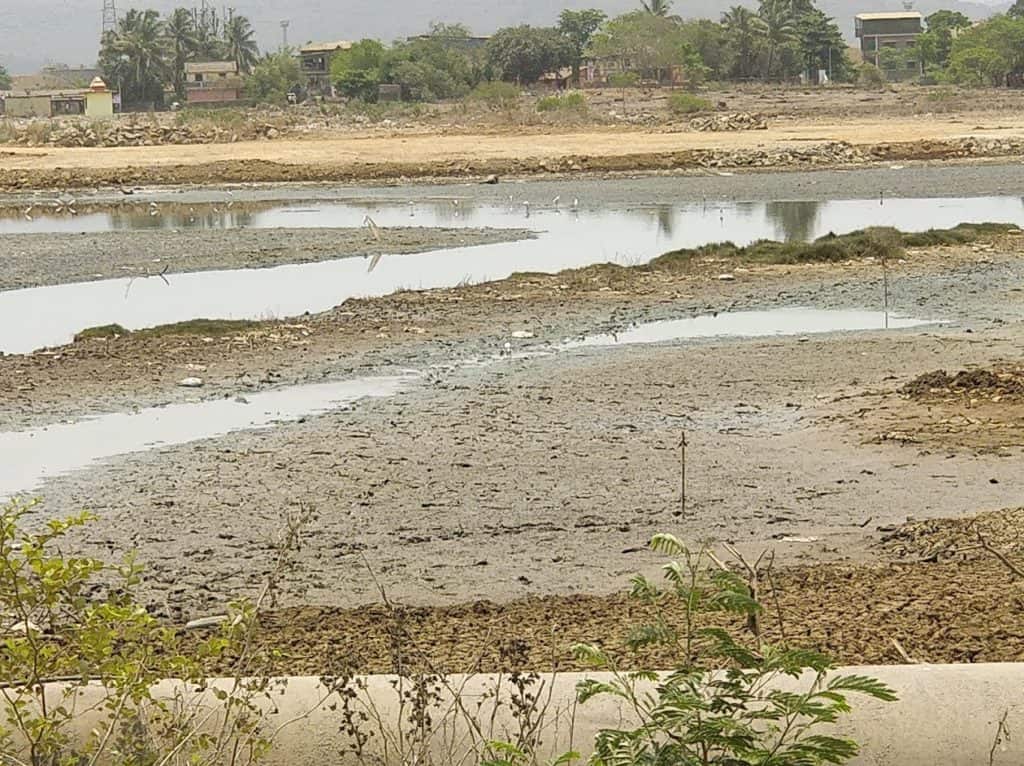NatConnect Foundation aims to protect and conserve the environment in the Mumbai Metropolitan Region. Citizen Matters spoke to NatConnet director B N Kumar, who is also a media veteran.
What are major environmental issues facing Mumbai’s coastal areas. How will these impact Mumbai’s biodiversity?
For long, authorities have been unconcerned and apathetic about Mumbai’s ecology. It has become customary and almost an annual event for the people to suffer floods and city shutdown. But the deluge of 2006, somehow, made people realise that the destruction of mangroves has also contributed to the disaster. Mumbai Metropolitan Region (MMR), the ever-extending and expanding urban area has never been considered part of the city. Areas such as Navi Mumbai, Uran, Thane and Kalyan have always been considered as suburbs and did not form part of the comprehensive environment or biodiversity plan. The governments and planning authorities considered only infrastructure development without caring for the environment.
Recently National Green Tribunal passed an order relating to environment clearance granted to Jawaharlal Nehru Port Trust. Are you hopeful that it would stop further destruction of wetlands in the region?
The Western Zonal Bench of the NGT formed a four-member committee to look into the allegations of violations of environmental clearance for the JNPT. We hope truth will come out of this committee. We hope the complainants in the case will also be involved in the site visits so that they can point out the ground reality.
There have been reports encroachment of mangroves and wetlands in and around Mumbai during the pandemic. Has the government taken any steps to stop this?
Bombay High Court ordered about three years ago that all mangroves have to be handed over to the Forest Department for conservation. The state government has also ordered notification of the mangroves as reserved forests under Section-4 of the Indian Forests Act. This process is very slow which is giving ample time for the organised land mafia. Even the government owned organisations such as city planner CIDCO are dilly-dallying on the mangrove transfer issue. JNPT is sitting pretty on 900,000 hectares of mangroves. Unless the sea forests are notified as reserved forests, the forest department cannot take action. We are tweeting the government almost on a daily basis.
Do you see an increase in citizen participation in environmental issues in the city?
Thanks to the environmental groups’ campaign, there has been a tremendous enthusiasm among the people now. The awareness levels are high and the man-on-the street calls us up. I think the fact that nature heals itself during the current lockdown has helped people think twice about the environment.
Recently, we met with some success in a case of the NHAI work resulting in blocking of tidal water flow to mangroves and the death of over 5,000 sea plants. Due to our concerted, collective efforts, the water flow has been restored after two and half years. The mangroves has started growing again on their own.

The ‘Mumbai Biodiversity bachao’ campaign has really got great support from environmental action groups. What are main issues involved?
The issues are basically the issues concerning the Mumbai Metropolitan Region as a whole – the wetlands, mangroves and hills. The MMR is being expanded and our concern is that the officers in-charge do not care for environment. For instance, CIDCO refused to accept the existence of wetlands in Navi Mumbai despite thousands of flamingos flocking to these water bodies.
The Powai lake has been facing neglect and apparently dying a slow death. What can we do to save it?
Desilting and maintenance are important. We citizens also must realise the importance maintaining cleanliness of the waters. The lake’s water cannot be used for human consumption. It is not potable. But it adds to the beauty of the area. The excess water flows into the ocean via what we call the Mitthi River.
You have started a campaign on New Navi Mumbai airport and ecological impact of the project. Tell us about it.
The airport project itself is anti-environment as it results in diversion of three rivers and flattening of hills. CIDCO argued these are mud-hills. But actually, they are blasting solid rock hills. The wetlands, which are home to thousands of migratory birds, are being buried by Navi Mumbai SEZ, JNPT and CIDCO. This is resulting in the birds fighting for landing places. Bombay Natural History Society has warned long ago that the birds might find the airport area ideal for nesting and roosting and this would lead to bird-hit threats to the aircraft flying in and out of the Navi Mumbai International Airport (NMIA).
There are reports about rise in the bird population also
Yes. My contacts in BNHS also say that the bird population in the airport project area is on the rise. Even bats are seen in large numbers. These are matters of serious concern. Tomorrow, they will start killing these birds and bats. Is that the solution? Our point is that the bird habitats such as wetlands and mangroves have to be conserved.
Read more: “COVID19 has become a convenient reason for not doing substantive field work on mangroves”
What are your suggestions now to save Mumbai from further environmental degradation?
Urban planners must be given basis lessons in environment. They seem to have forgotten environment studies they have done in schools. The officers in-charge of the government bodies come and go every three years and it is the people who live in MMR that suffer. For instance, for the neglect of officers three years ago, the Uran people are made to suffer due to unseasonal floods. The fishing community has lost their source of survival as the water channels have been blocked. Now even the local farmers are suffering as saline water is entering their fields. Hence, we seek accountability. Unless the authorities who are getting paid from the tax-payers’ money, take this seriously, nothing will change.